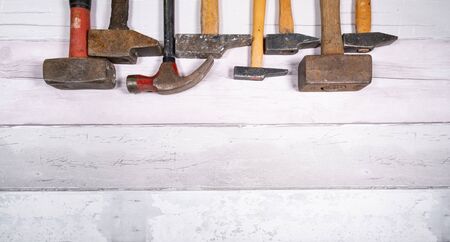Introduction to Feng Shui for American Homeowners
Feng Shui is an ancient Chinese practice that focuses on balancing the energies in a space to promote health, happiness, and prosperity. While it has been around for thousands of years, its core principles can be easily applied to today’s American homes, especially during renovations and new builds. Understanding the basics of Feng Shui can help homeowners create more harmonious, comfortable, and inviting living spaces.
What Is Feng Shui?
The term “Feng Shui” literally means “wind and water” in Chinese, symbolizing the flow of energy (or “Chi”) throughout a space. The goal is to arrange your home in a way that encourages positive energy flow while minimizing negative influences. This can impact everything from the layout of rooms to the placement of furniture and even color choices.
Historical Origins of Feng Shui
Feng Shui dates back over 3,000 years to ancient China. Originally, it was used to determine the most auspicious locations for homes and graves by analyzing natural landscapes and how wind and water moved through them. Over time, these ideas evolved into a system for organizing interior spaces as well as architecture and city planning.
Applying Feng Shui Principles to American Homes
Many American homeowners are turning to Feng Shui to bring greater harmony and comfort into their lives. You don’t need to follow every rule strictly; instead, it’s about making intentional choices that support well-being. Here’s a quick overview of key Feng Shui principles and how they might translate into practical tips for home renovations or new builds:
| Feng Shui Principle | Description | How It Applies in American Homes |
|---|---|---|
| Chi (Energy Flow) | Maintain smooth pathways for energy to move freely. | Avoid cluttered entryways; keep hallways open and tidy. |
| Bagua Map | A tool that divides your home into nine areas, each representing a life aspect (like wealth or relationships). | Use this map when planning room functions or decor themes. |
| Yin & Yang Balance | Create a balance between restful (Yin) and active (Yang) spaces. | Add cozy touches in bedrooms (Yin), energizing features in kitchens/living rooms (Yang). |
| The Five Elements | Incorporate wood, fire, earth, metal, and water elements for harmony. | Select colors, materials, and accessories that represent each element. |
| Main Entrance Importance | The entryway sets the tone for the whole houses energy. | Keep it clean, well-lit, and welcoming with clear address numbers. |
Why Consider Feng Shui During Renovations or New Builds?
Whether you’re remodeling your kitchen or building a home from scratch, including Feng Shui concepts can make your environment feel more uplifting and balanced. These small adjustments can lead to big benefits in daily comfort, productivity, and overall happiness for everyone living in the house.
2. Planning Your Home Layout with Feng Shui
Tips on Site Selection
Choosing the right site for your home is the first step in creating a harmonious environment. In Feng Shui, its important to consider the natural surroundings and how they affect energy flow. Here are some key points:
| Feng Shui Tip | What It Means for You |
|---|---|
| Avoid sharp angles or T-junctions | Try not to build or buy a home that faces directly into a street or has roads pointing straight at it, as this can bring harsh energy. |
| Look for gentle slopes | A site that gently rises behind your house and slopes away in front is considered auspicious, offering support and good fortune. |
| Choose open spaces with good light | Natural sunlight and open views help positive energy (chi) circulate freely around your home. |
| Avoid sites near large structures or clutter | Too many tall buildings or messy surroundings can block energy flow and affect harmony inside your home. |
Room Placement Guidelines
The placement of rooms within your home influences the way energy moves through the space. Here are some practical Feng Shui tips when planning renovations or building from scratch:
- Main Entrance: The front door is called the “mouth of chi.” Make sure its easily visible, well-lit, and opens smoothly without obstruction.
- Bedrooms: Place bedrooms away from noisy areas like the garage, kitchen, or main living spaces. Ideally, bedrooms should be in quieter parts of the house to promote restful sleep.
- Kitchens: Kitchens represent health and wealth. Keep them away from bathrooms and avoid placing them directly across from the front door if possible.
- Bathrooms: Position bathrooms so they do not directly face the kitchen or dining area, which helps maintain good energy for health and family relationships.
- Home Office: For those working from home, choose a room with plenty of natural light and position your desk so you have a clear view of the door but arent directly in line with it.
Sample Room Placement Table
| Room Type | Best Placement Tips | Avoid This Placement |
|---|---|---|
| Main Bedroom | Towards back of house, away from entryways and noise | Over garages, next to bathrooms, or above kitchens |
| Kitchens | Centrally located but not too close to front door; good ventilation | Directly facing front entrance; next to bathrooms |
| Home Office | Near natural light; view of doorway; quiet area | Facing walls; under stairs; cramped corners |
| Living Room | Towards center/front of home with open space for gatherings | Tucked away in back corners; isolated rooms with little light |
| Bathrooms | Away from kitchen/dining; not directly off main entrance or living room | Centrally located in floor plan; next to bedrooms if avoidable |
Creating Harmonious Floor Plans for Renovations & New Builds
If youre designing a new home or renovating an existing one, aim for open layouts that encourage smooth movement between rooms while maintaining each area’s purpose. Avoid long, narrow hallways that channel energy too quickly through the home. Instead, use gentle curves or well-placed furniture to slow down chi and create cozy gathering spaces.
Don’t forget outdoor spaces! Incorporate gardens, patios, or water features where possible. These elements help balance energy around your house, supporting relaxation and prosperity.
By following these simple Feng Shui guidelines during your planning process, you can create a welcoming, comfortable home filled with positive vibes—perfect for American families seeking both style and harmony.

3. Color, Light, and Material Choices
Choosing the Right Colors for Your Home
In Feng Shui, color plays a big role in creating positive energy—or “chi”—in your home. When renovating or building a new house, it’s important to select colors that both match your personal style and promote harmony. For American homeowners, this means balancing popular trends with the traditional meanings of colors in Feng Shui. Here’s a quick guide:
| Room | Suggested Feng Shui Colors | American Style Tips |
|---|---|---|
| Living Room | Earth tones (beige, tan), soft greens, warm yellows | Combine with cozy throws or patterned cushions for a welcoming look |
| Kitchen | White, light blue, green | Add colorful backsplashes or modern cabinets for personality |
| Bedroom | Soft blues, gentle pinks, lavender | Use plush bedding and layered textures for comfort and calmness |
| Bathroom | Pale blues, whites, gentle greens | Consider spa-inspired décor and natural elements like plants |
| Home Office | Greens, browns, muted yellows | Add wood accents and ergonomic furniture for productivity |
The Importance of Lighting Fixtures
Lighting isn’t just about brightness—it shapes the mood and energy flow in every room. American homes often have open layouts and large windows; use these features to your advantage by maximizing natural light wherever possible. For artificial lighting:
- Layered lighting: Use a mix of overhead lights, floor lamps, and task lighting to create flexible spaces.
- Dimmable fixtures: Install dimmers to control the ambiance depending on the time of day or activity.
- Avoid harsh lighting: Choose bulbs with warm tones instead of stark white light for a more inviting feel.
- Highlight focal points: Accent lighting can showcase art or architectural features while boosting positive chi.
Selecting Building Materials That Support Good Energy Flow
The materials you choose for floors, walls, and furnishings also affect your home’s energy. In American homes—especially new builds—there’s a wide range of options. To blend Feng Shui principles with practicality:
| Material Type | Feng Shui Benefits | How to Incorporate in U.S. Homes |
|---|---|---|
| Wood (oak, maple, bamboo) | Nurtures growth and flexibility; warm energy source | Hardwood floors, wood beams, or reclaimed wood furniture are both stylish and eco-friendly choices. |
| Naturally sourced stone (granite, marble) | Adds grounding energy; symbolizes stability and strength | Kitchens with granite counters or entryways with slate tiles work well in many American designs. |
| Ceramic & porcelain tile | Cleansing qualities; encourages clear thinking | Popular in bathrooms or kitchens—easy to maintain and available in many patterns. |
| Cotton & linen fabrics | Breathe easily; promote relaxation and comfort | Sofas, curtains, bedding—these natural fibers fit most American lifestyles. |
Quick Tips for Making Choices That Suit Your Lifestyle
- Select palettes that make you feel good every day—not just what’s trendy.
- If you love bold colors or unique materials, use them as accents so they don’t overwhelm your space.
- Create visual balance by mixing textures—like pairing soft fabrics with sleek tiles or shiny metals.
- Above all, choose items that reflect your personality while supporting positive energy flow throughout your home.
4. Integrating Feng Shui with American Architectural Styles
Feng Shui can fit beautifully into the most popular American home styles. Whether you’re renovating a classic Colonial, updating a Craftsman, or building a sleek Modern home, you can create positive energy flow (chi) while honoring your home’s character. Here’s how to blend these traditions for a harmonious living space.
Feng Shui and Colonial Homes
Colonial homes are known for their symmetry, central entryways, and balanced windows. These features work well with Feng Shui principles that favor balance and clear pathways.
| Colonial Feature | Feng Shui Tip |
|---|---|
| Central Entry Door | Keep the front door clean and inviting; place plants or lights on each side for balanced energy. |
| Symmetrical Windows | Avoid clutter in front of windows to let natural light and good energy circulate freely. |
| Formal Living/Dining Rooms | Arrange seating so everyone can see the door, promoting security and comfort. |
Feng Shui and Craftsman Homes
Craftsman homes feature open porches, exposed beams, and built-in cabinetry—perfect for adding warmth and grounded energy.
- Front Porch: Use potted plants or wind chimes by the entrance to attract positive chi before it enters your home.
- Natural Materials: Emphasize wood, stone, and earth tones inside to support stable, nurturing energy.
- Cohesive Flow: Keep hallways clear and use area rugs to guide chi smoothly from room to room.
Feng Shui in Modern Homes
Modern homes have open layouts, large windows, and minimalistic designs. Feng Shui can help soften these spaces and make them more welcoming.
| Modern Feature | Feng Shui Adjustment |
|---|---|
| Open Floor Plan | Create zones using rugs, plants, or screens to define spaces and control energy flow. |
| Large Windows/Glass Walls | Add soft curtains or blinds for privacy and to prevent energy from “leaking out.” |
| Sleek Minimalism | Add pops of color or natural decor elements to keep the space lively but not cluttered. |
Quick Tips for Any Style Home
- Always keep the main entry clear and well-lit—it’s the “mouth of chi” for your house.
- Avoid placing beds or desks directly in line with doors; angle them so you can see who enters without being directly in front of the doorway.
- Add houseplants (real or high-quality artificial) to boost fresh, positive energy indoors.
- If possible, choose soft, rounded furniture edges rather than sharp corners for a smoother flow of chi throughout your home.
5. Common Feng Shui Challenges and Solutions
Renovating or building a new home is exciting, but many American homeowners run into Feng Shui issues along the way. Here are some of the most common challenges you might face, plus practical solutions that work well with American architecture and lifestyle.
Challenge: Front Door Alignment
In Feng Shui, the front door is called the “mouth of chi” because it’s where energy enters your home. Many American homes have front doors aligned directly with back doors or large windows, causing positive energy to flow straight out.
Solution:
- Add a foyer table, screen, or tall plant between the doors to slow down the flow of energy.
- Use a rug or artwork to define the entry space and invite good vibes in.
Challenge: Staircase Facing the Front Door
This layout often appears in modern American builds and can cause energy to rush up or out too quickly.
Solution:
- Place a decorative runner on the stairs to soften energy flow.
- Hang artwork at eye level on the landing to help ground and balance energy.
Challenge: Bedrooms Over Garages or Kitchens
It’s common in multi-level homes for bedrooms to be located above garages or kitchens, which may disrupt restful energy and sleep quality.
Solution:
- Add an area rug under the bed to buffer and stabilize energy.
- If possible, use calming colors in both rooms to promote harmony.
Challenge: Bathrooms in Wealth Areas
If your bathroom lands in the southeast (wealth) sector of your home, it could symbolically “drain” prosperity according to Feng Shui principles.
Solution:
- Keep bathroom doors closed and toilet lids down.
- Add healthy green plants or wood décor items to boost abundance energy.
Quick Reference Table: Common Issues & Solutions
Feng Shui Challenge |
Typical Scenario |
Simple Solution |
|---|---|---|
| Front Door Alignment | Front door directly faces back door or window | Add furniture/plants; use rugs/artwork in entryway |
| Staircase Facing Door | Main stairs point toward entrance | Add runner; hang art on landing wall |
| Bedroom Over Garage/Kitchen | Bedrooms located above active areas | Add area rug; use calming colors |
| Bathroom in Wealth Area | Southeast sector has a bathroom | Close doors; add plants/wood elements |
| Poor Natural Light | Lack of windows or dark rooms | Add mirrors; use light paint colors; increase lighting fixtures |
Troubleshooting Tips for American Homes
- If you can’t remodel major features, focus on décor—plants, color choices, and lighting all help shift energy without construction.
- Consult a local Feng Shui expert familiar with American layouts for personalized advice if you’re stuck.
- Remember: Small changes can make a big difference!
The key is finding practical Feng Shui fixes that fit your home’s unique style and your everyday needs. With these strategies, you’ll bring harmony and positive energy into your renovated or newly built American home.


